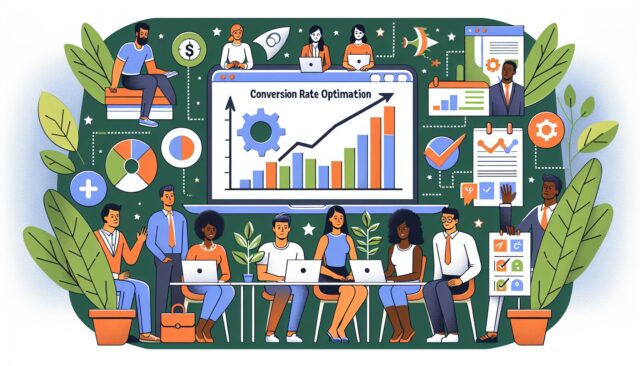Starting a new business is an exciting venture, but it also comes with its fair share of challenges. One of the biggest hurdles that startups face is the need to quickly generate sales to sustain their growth. This is where conversion rate optimization (CRO) comes into play. By focusing on improving your conversion rates, you can effectively increase your sales and grow your business. In this article, we will explore the importance of CRO for startups and provide some helpful tips to get you started.
Why is Conversion Rate Optimization Important for Startups?
Conversion rate optimization is the process of improving your website or landing page’s ability to convert visitors into customers. It’s a crucial aspect of your startup’s growth strategy because it directly impacts your bottom line. Here are some key reasons why CRO should be a top priority for startups:
Maximizing ROI on Marketing Efforts
As a startup, you likely have a limited budget for marketing and advertising. By maximizing your conversion rates, you can make the most of every visitor to your website or landing page. Instead of spending more on increasing traffic, CRO focuses on converting the existing traffic into paying customers. This means you can achieve higher returns on your marketing investment without breaking the bank.
Establishing a Strong Customer Base
Converting visitors into customers is an essential step in building a strong customer base. By optimizing your conversion rates, you can acquire more customers and establish a loyal following. Happy customers are more likely to refer your product or service to others, effectively generating organic traffic from Google and other search engines. This word-of-mouth marketing can be a game-changer for startups looking to gain traction in their target market.
Gaining Competitive Advantage
In today’s competitive business landscape, standing out is crucial for startups. By dedicating time and resources to CRO, you can gain a competitive advantage by providing a seamless and optimized user experience. A well-optimized website not only improves your conversion rates but also enhances your brand reputation and credibility. This can lead to higher customer trust and differentiate your startup from the competition.
Tips for Effective Conversion Rate Optimization
Now that we understand the importance of CRO, let’s delve into some practical tips to help you optimize your conversion rates and accelerate your startup’s growth:
1. Analyze and Understand User Behavior
To improve your conversion rates, it’s vital to understand how users navigate and interact with your website. Use tools like Google Analytics to gather data on user behavior, such as bounce rates, time spent on page, and click-through rates. This information will help you identify potential bottlenecks in the user journey and make data-driven decisions to optimize your website accordingly.
2. Streamline Your Website’s Design
A cluttered and confusing website design can deter visitors and significantly impact your conversion rates. Focus on creating a clean and intuitive design that guides users towards your desired actions, whether it’s making a purchase, subscribing to a newsletter, or filling out a contact form. Pay attention to the placement of call-to-action buttons, the readability of your content, and the overall visual appeal of your website.
3. Optimize Page Load Speed
In today’s fast-paced digital world, users expect websites to load quickly. A slow-loading website can lead to high bounce rates and missed conversion opportunities. Optimize your website’s load speed by compressing images, minifying code, and leveraging caching techniques. Google’s PageSpeed Insights tool can provide valuable insights and recommendations for improving your website’s performance.
4. Implement A/B Testing
A/B testing is a powerful technique that allows you to compare different versions of your website or landing page to determine which one generates better conversion rates. By systematically testing variations in design, copy, and layout, you can identify what resonates most with your audience and optimize for higher conversions. This iterative process can lead to significant improvements in your overall conversion rate over time.
5. Leverage Social Proof and Testimonials
People are more likely to convert when they see social proof or testimonials from satisfied customers. Incorporate customer reviews, ratings, and testimonials prominently on your website. You can also showcase relevant statistics or success stories that highlight the value and benefits of your product or service. This helps build trust and credibility, which, in turn, drives conversions.
Conclusion
Conversion rate optimization is a vital strategy for startups looking to boost their sales and accelerate business growth. By focusing on maximizing your conversion rates, you can maximize your marketing ROI, establish a strong customer base, and gain a competitive advantage. Remember to analyze user behavior, streamline your website’s design, optimize page load speed, implement A/B testing, and leverage social proof. By implementing these strategies, you’ll be well on your way to optimizing your conversion rates and achieving sustainable growth for your startup.









